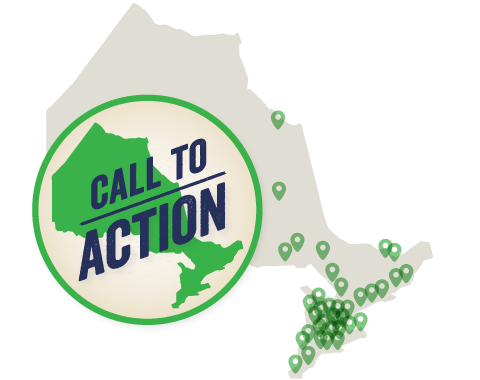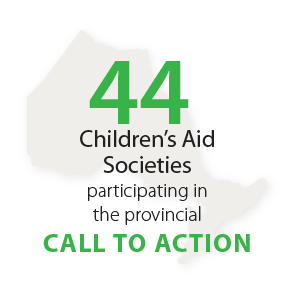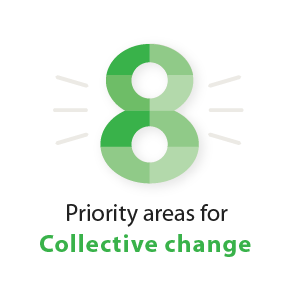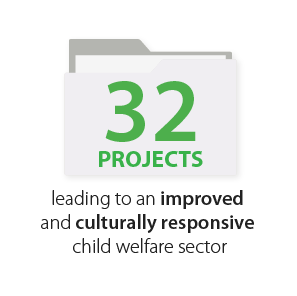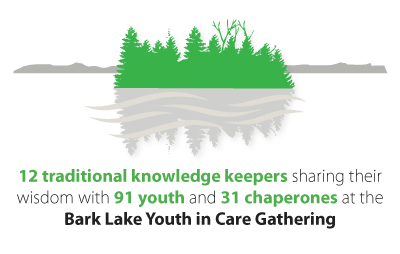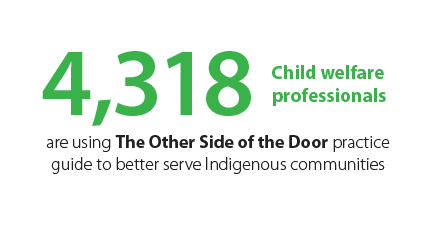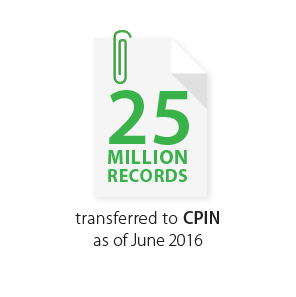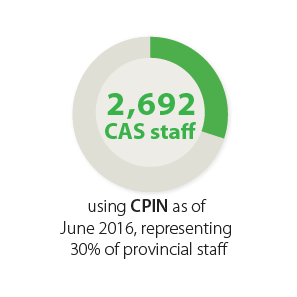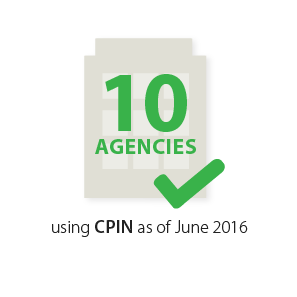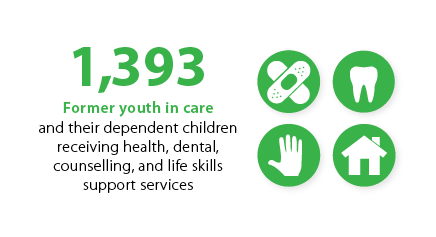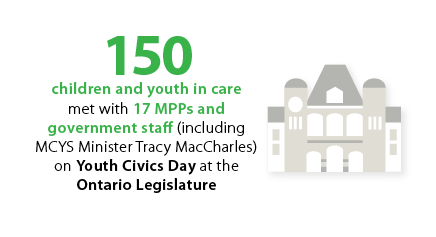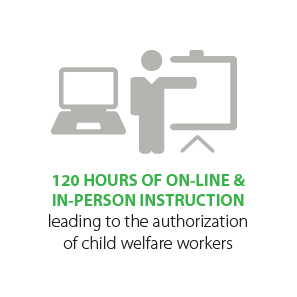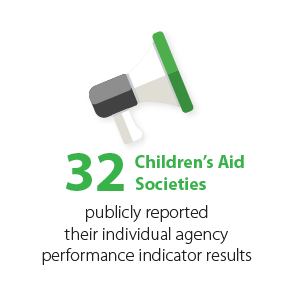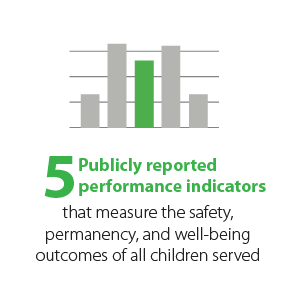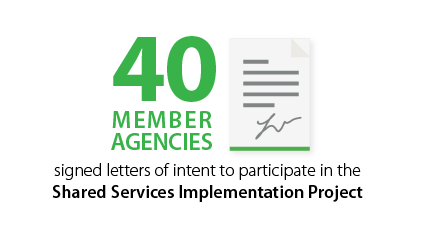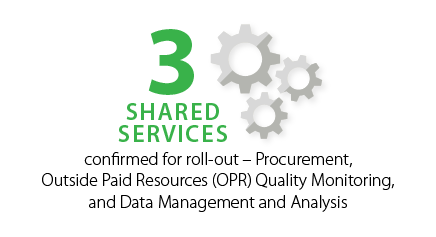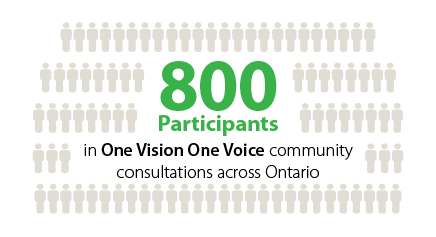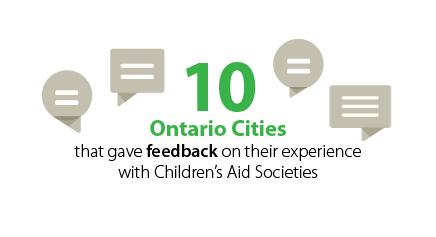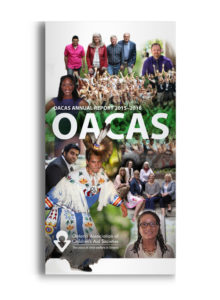In 2015-2016 OACAS, in collaboration with its members,
Leading a Call to Action.
In 2015–2016 local Children’s Aid Society Boards and their staff made a formal commitment to work as a provincial system to continue to improve the quality and consistency of services to children, youth, and families across Ontario. The child welfare sector also committed to communicating about the changes arising from the Call to Action in a transparent and accountable way.
The Call to Action contains eight broad Priority Areas for collective change toward an improved and culturally responsive child welfare sector in Ontario. These Priority Areas will:
- Address service delivery issues
- Build human resources competence
- Optimize the structure of the system
- Enhance governance
- Fully implement a provincial information system
- Enhance data collection and public reporting
- Act on recommendations from the Truth and Reconciliation Commission
- Develop services that are culturally appropriate
Collaborating to improve the health, well-being and life chances of Aboriginal children.
In 2015–2016 the child welfare sector continued its journey towards reconciliation, in recognition that the actions of Children’s Aid Societies have harmed Indigenous peoples and communities. OACAS has provided guidance and leadership for members based on a Reconciliation Framework that inspires agencies to:
- Welcome Indigenous culture
- Create relationships with Indigenous communities
- Support restoration of jurisdiction
- Support reconciliation
- Facilitate public education
OACAS activities to support reconciliation this year included:
- Ongoing collaboration with the Association of Native Child and Family Services Agencies of Ontario, including jointly hosting MPP Briefing Day and regularly scheduled Indigenous child welfare sector meetings
- Training for senior leadership on how to better serve Indigenous people, based on The Other Side of the Door: A Practice Guide for Child Welfare Professionals
- Organizing and hosting the 3rd annual Indigenous Youth in Care Gathering at the Bark Lake Leadership Centre
- Creating and administering a survey on restoring jurisdiction, to capture in a quantifiable way the sector’s baseline in its path towards reconciliation that will demonstrate to Indigenous communities that the child welfare sector is taking reconciliation seriously. The survey is based on the OACAS Reconciliation Framework and looks at the nature of agency partnerships with communities and the services delivered to families.
- Hosting the Bringing Our Minds Together Think Tank with guidance from a steering committee that included Indigenous stakeholder representatives and that brought together Indigenous representatives and OACAS Board Members and staff to talk about actions OACAS might take toward acknowledgement, apology, and reconciliation by child welfare in Ontario with Indigenous peoples.
Supporting member agencies as they transitioned to CPIN.
The Child Protection Information Network (CPIN) modernizes child welfare by introducing a consistent approach to collecting information across the province. In 2016 five new agencies relinquished their legacy systems and transferred millions of files to join CPIN, bringing the number of agencies that have joined CPIN to 10.
OACAS support for agencies transitioning to CPIN includes providing a liaison between the field and the Ministry of Children, Community and Social Servicess to promote the development of the best product and ensure effective implementation of CPIN. In 2016 OACAS continued to provide support to agencies “going live” as well as to agencies that implemented CPIN last year and are now in the sustainment phase. OACAS is also an active member in the governance of CPIN.
Engaging youth and former youth in care.
This year OACAS continued its active support of youth in care in recognition that their input is essential to improving the child welfare system and that transitioning out of care is one of the most challenging experiences youth will face.
OACAS facilitates youth engagement on behalf of its members through the YouthCAN program. YouthCAN’s mandate is to improve the quality of care so youth are empowered, secure, and reach their fullest potential. This year YouthCAN achieved these goals by:
- Hosting its 9th annual conference, “Gear up for Success”, at Humber College to help youth in care explore postsecondary options and career opportunities
- Organizing Youth Civics Day at the Ontario Legislature for children and youth in care from across the province in honour of Children and Youth in Care Day
- Supporting a presentation by the Youth Policy Advisory and Advocacy Group (YPAAG) to the senior leaders of Children’s Aid Societies from across the province on the 10 ways youth want to see the child welfare system improved.
- Awarding over 59 bursaries, grants, and scholarships for postsecondary education and training thanks to the generosity of the Clark family, Children’s Aid Foundation, and PHD foundation
- In 2014 OACAS launched the Aftercare Benefits Initiative to provide health, dental, counselling, and life skills support services to former youth in care aged 21 to 25. In 2015–2016 enrollments grew to a total of 1,393 plan members, including children of former youth in care.
Building a new Child Welfare Training series as a pathway to authorization for all workers.
In 2015–2016 OACAS redesigned the training curriculum for child welfare professionals. This curriculum is a key pillar in the development of a new process to authorize child welfare workers across the province. The curriculum will reflect the child welfare realities in Ontario using an anti-oppressive framework, which includes topics on equity, human rights, and anti-racism, and a focus on Indigenous content. Authorization will be dependent on child welfare workers completing the new foundational learning process, which includes theory, practice, assessment throughout, and an exit exam.
The learning program for child welfare workers consists of a competency-based framework that provides new workers with foundational knowledge. The curriculum will be spread over eight courses and 120 hours of instruction using a hybrid format: learning will include both in person and online content. Assessment and evaluation of the curriculum has been integrated into all the courses.
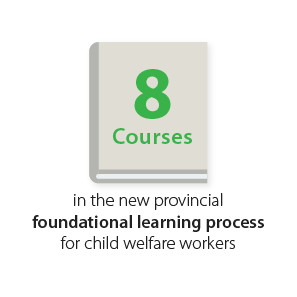
Supporting agencies to publicly report agency-specific performance indicators.
Through the Provincial Performance Measurement and Management Project, Children’s Aid Societies have taken an important step to enhance their accountability and commitment to better outcomes for the children, youth, and families they serve. This year, for the first time, Children’s Aid Societies publicly reported their individual performance indicator results for five service areas.
The five publicly reported performance indicators measure safety, permanency, and well-being in the following way:
- The recurrence of child protection concerns in a family after an investigation
- The recurrence of child protection concerns in a family after ongoing protection services were provided
- The days of care by placement type
- The time to permanency
- The quality of the caregiver–youth relationship
Leading the development of a business case for shared services in the child welfare sector.
In 2015–2016 OACAS and its members finalized and submitted a Business Case for Shared Services in the child welfare sector to the Government of Ontario for funding consideration. The overall goal is to implement a program that builds sector capacity, improves service quality and performance, reduces costs, and enhances Ontario’s child welfare system.
The business case for Shared Services was developed following 18 months of consultation with member agencies and external stakeholders. The business case describes the proposed service delivery of shared services, the revenue framework, the governance model, and included a cost–benefit analysis. OACAS activities to lead the Shared Services project this year included:
- Completing a recommendations report
- Consulting with Indigenous agencies to develop a more comprehensive understanding of the interests of Indigenous services agencies in the proposed model for Shared Services
- Completing a spend analysis report based on agency expenditure data and available MCCSS financial data
- Consulting with external stakeholders, including labour, OARTY, ORCA, FPSO, and LOFF to assist in their understanding of the Shared Services Project
- Sending agencies letters of intent to participate
